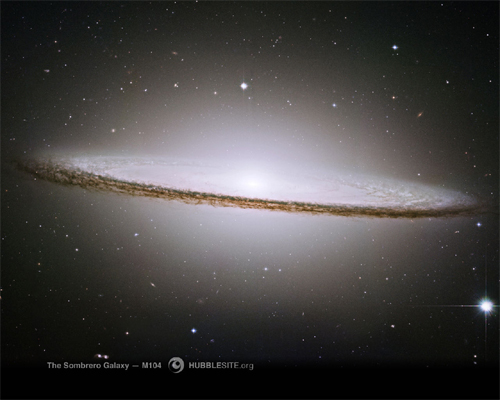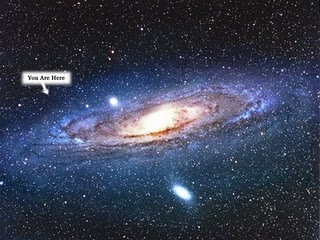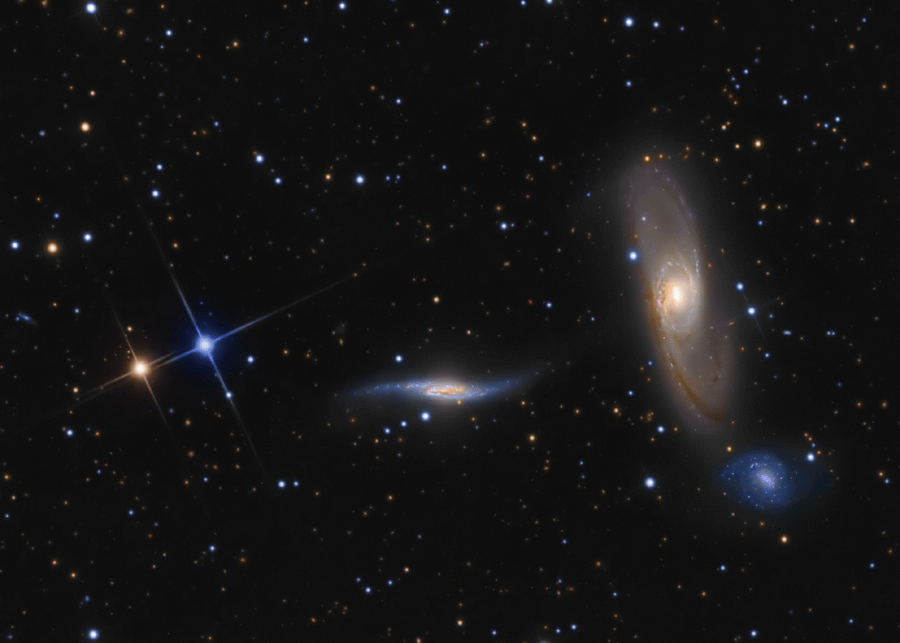Deep, Deep Void ... or not
It's
not really possible to grasp the vastness of space. We use the term
"light year" to measure distances among stars and galaxies but there
isin't a way to step-back and point to this physical measure and go
"there, right there is exactly one light year ... so just multiply out
... in your head, of course". To help put space in perspective,
here are some measurements; the Earth is nearly 25,000 miles in
circumference. The moon is roughly ten times this distance away,
at one quarter million miles. The Sun is 372 times that distance away
at 93 million miles! Light can travel between the Earth and Moon in
just about one second.

It takes eight minutes for the Sun's light to reach us from across 93 million miles. So starting right ... now, in roughly one year from this exact moment the Sun's light will have traveled 6,110,100,000,000 miles. In a little more than four years, it will reach the closest star system to us, Alpha Century, part of our own Milky Way galaxy. It's easier to imagine the three stars which make up the Alpha Century systm as being 4.22 light years out ... instead of 257,846,220,000,000 miles away.

See the galaxy from the stars
Okay, so that's a long way out there. Well, now that you've reached
another star system in our Milky Way galaxy, you can imagine it's a
great spiral of billions of stars (mostly star clusters of two and
three) rotating slowly (considering the scale, of course) like a huge
pin-wheel. Our solar system is in one of the arms of the spiral
galaxy (see above), and while the arms are rotating, we are also floating in an up and
down circular motion within the arm ... though this takes millions and
millions of years. However, this is why we watch things like comets
and asteriods so closely. Nothing is static in the Universe, things
are colliding and moving all the time. Just because a rock the size of Montana missed us a
thousand years ago doesn't mean it will miss us again on its next visit!

This is a Hubble photograph of distant galaxies, not mere stars!
Going back in time
So far so good for our galaxy, ... and we know there are countless galaxies scattered across the universe. When we talk about distances for objects in the Universe by measuring with the term light year, we begin to realize the distances are so great we are seeing light that began traveling toward us millions and billions of years ago. In other words, when we pick a point in the Universe and actually look through a telescope to *see* a galaxy, star cluster, nebulae cloud, or whatever, ... we see the object as it existed millions of years ago because its light/image has taken that long to reach our eyes at *this* very moment in time. In a very real sense we are looking *back* in time by millions of years. This means, it is possible to see a star which actually no longer exists, since all stars eventually burn out or explode. And other galaxies, well, they are no longer *exactly* where we see them now. They've changed and moved great distances, but in actual space-time ... not so much.
